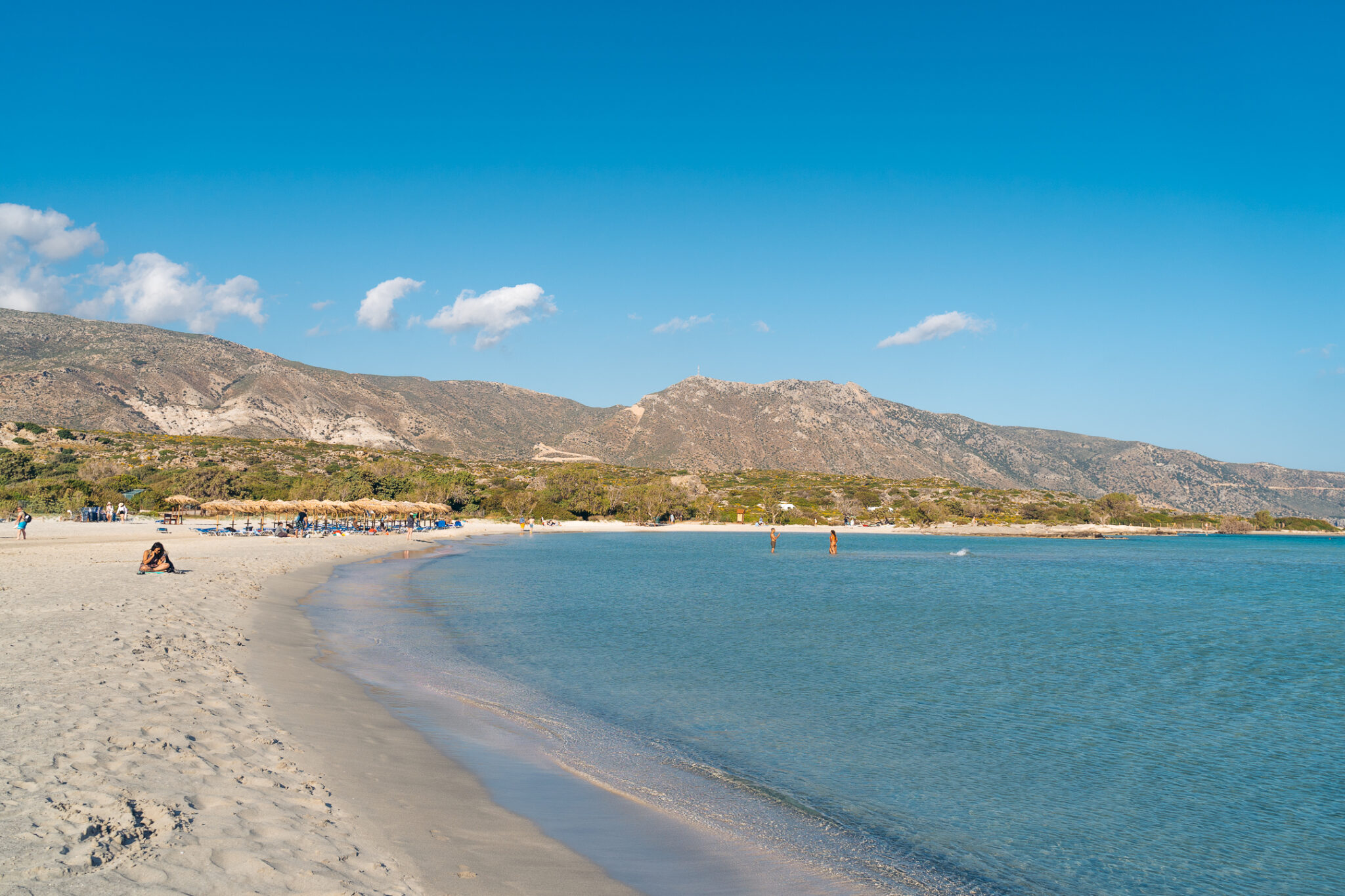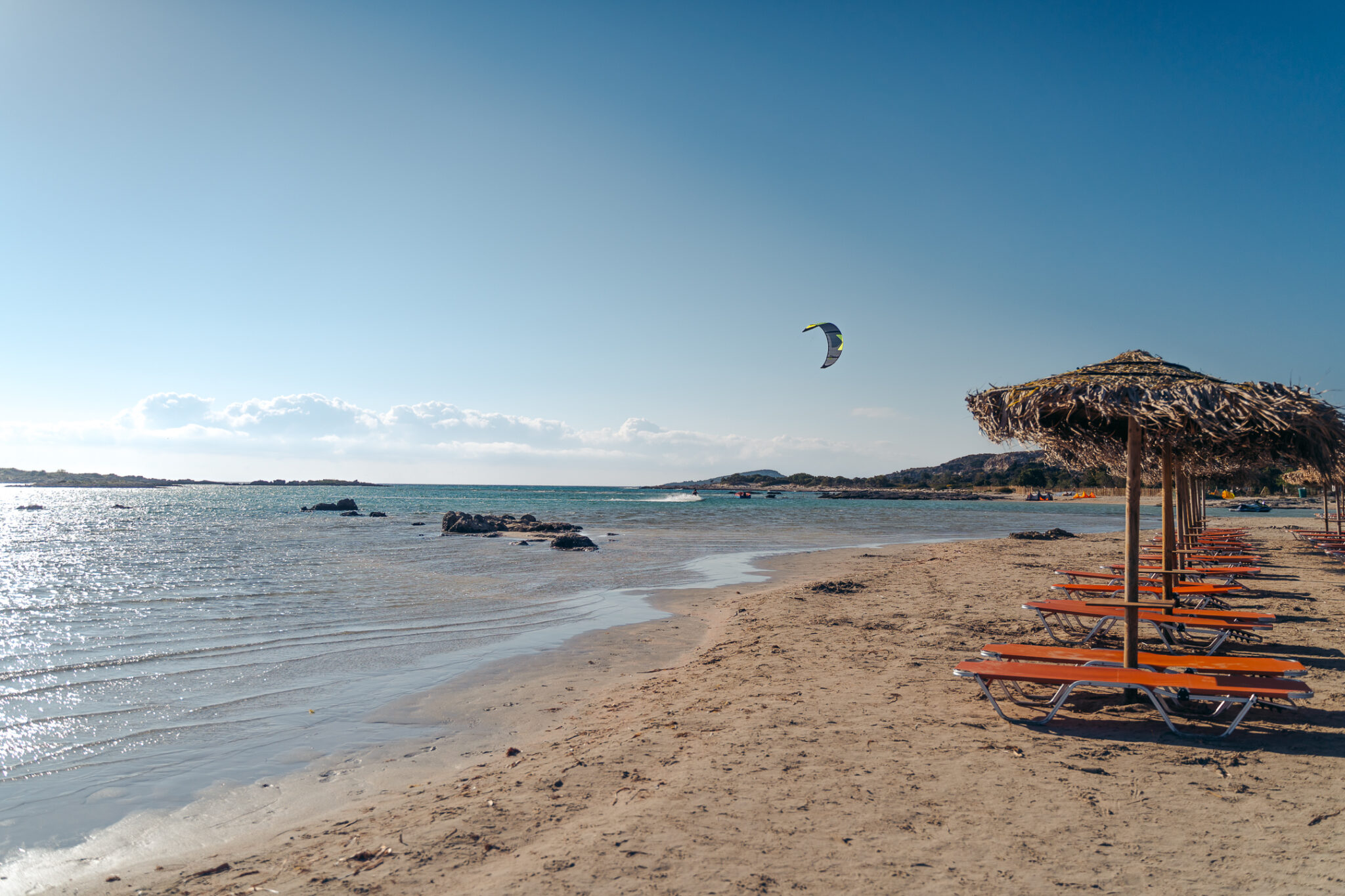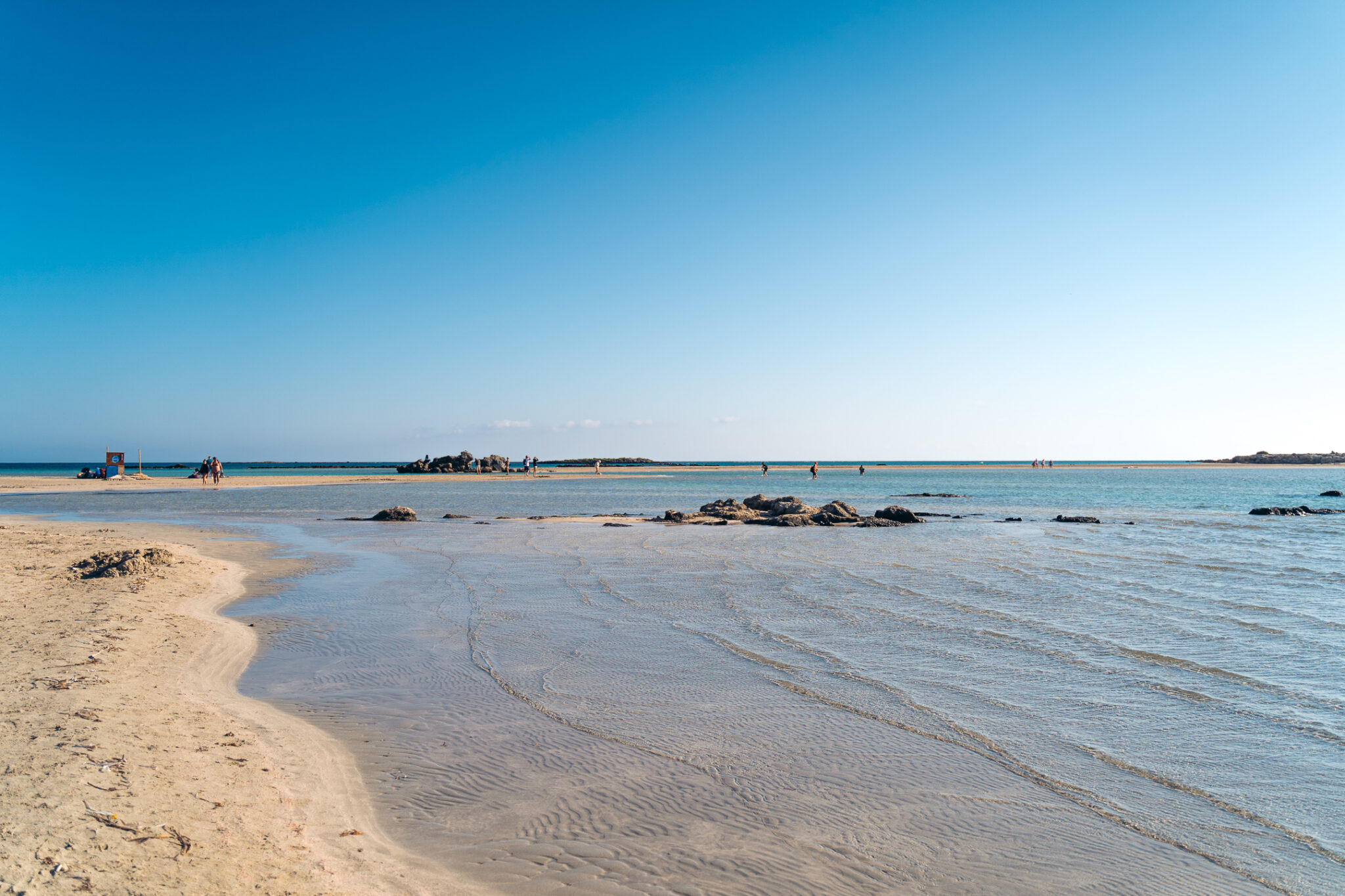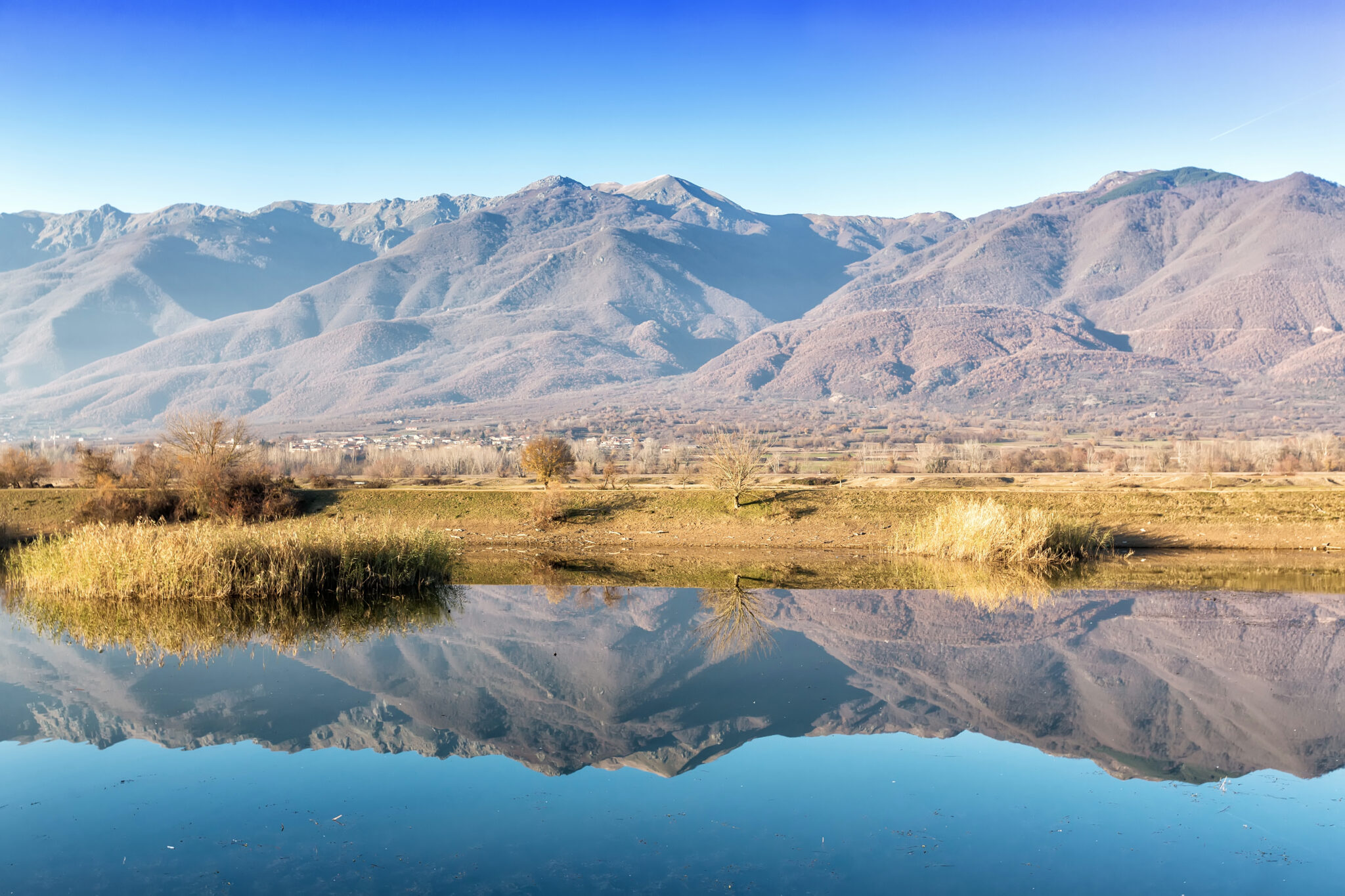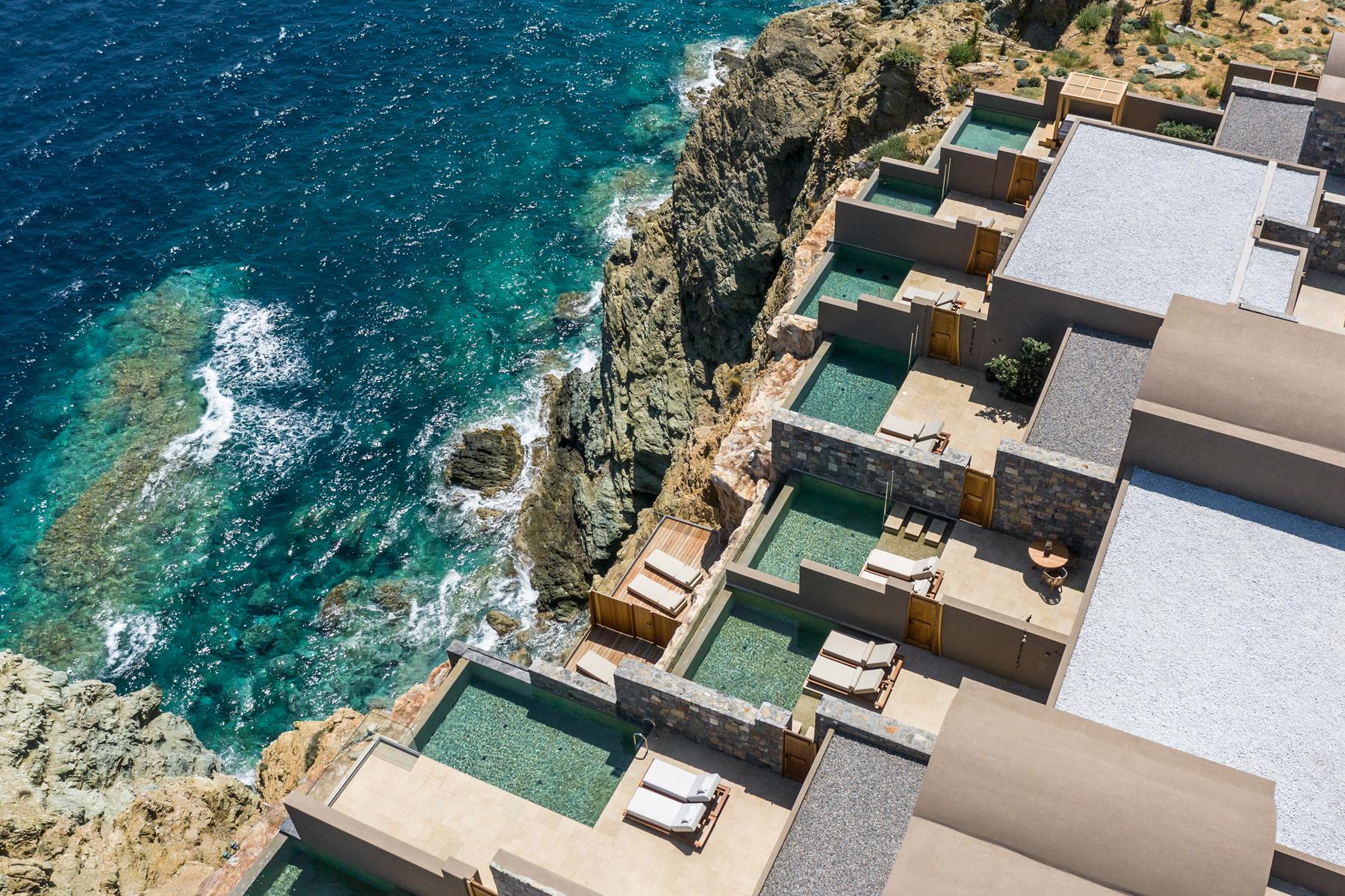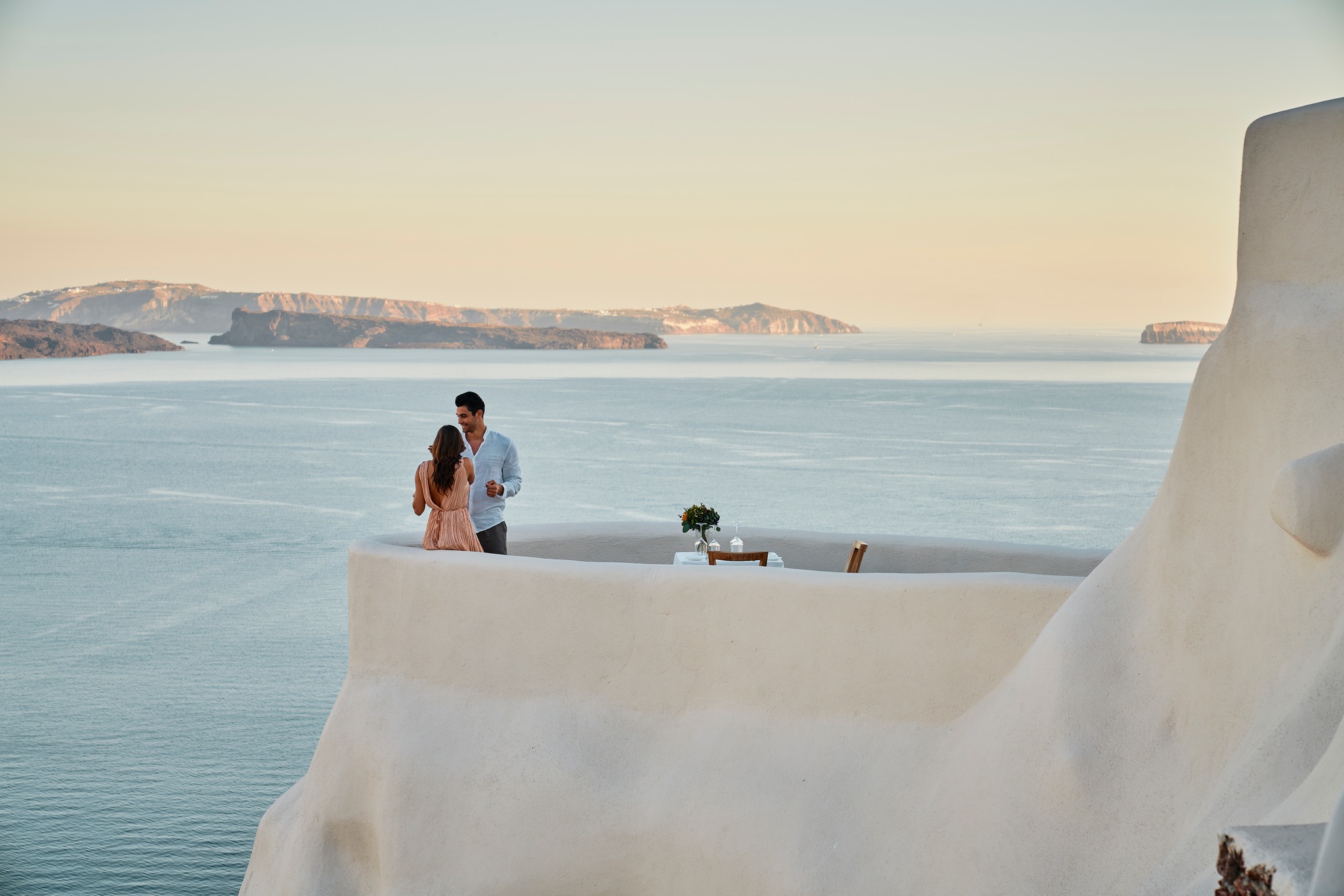An emblematic Cretan beach, a magical place on one of the most beautiful coasts of Greece and Europe, Elafonisi is located 76km southwest of Chania and 5km south of the Chrysoskalitissa monastery, at the westernmost part of Crete’s south.
Elafonisi resembles an island, because the place where the peninsula connects to the main island is so thin that it creates the impression of being a separate island. The exotic beauty of the area is due to the sand dunes, the cedar trees, the white lilies, the black rocks, its turquoise waters and its fine white-pink sand. The area belongs to the Natura 2000 network and is home to rare flora and fauna.
The beach stretches mostly east of the lagoon and is serviced, while the sea is shallow, ideal for small children as well as adults who enjoy playing on the sand. The millions of crushed seashells give a pink hue to the sand at parts.
If you want to be more secluded, you can walk until you find the perfect bay for you, around Elafonisi. While at the northernmost edge of Elafonisi, between steep rocks that serve as a barrier from the waves, you’ll see the chapel of Agia Irini, that has an unobstructed view of the sea.
Above the beach, you’ll see a monument dedicated to the victims of the great 1824 massacre, that occurred during the Ottoman rule. On Easter Sunday, in 1824, the men of Ibrahim Pasha killed 600 women and children, and 40 fighters, who had hidden in Elafonisi, in the hope that the Turks would not discover how shallow the passage was, as retribution for the revolt. However, a wandering donkey, looking for its master, gave them away. After the executions of the Christians, the Ottomans continued their killings in the Xotikospilia cave, and it is said that the number of people killed reached 850, while apparently many were also sold as slaves. In addition, the victims of the shipwreck of the Austrian ship Imperatrix, that sunk in February 1907, on its way to India, are buried on the island.
It’s definitely worth exploring the actual island of Elafonisi, and seeing the lighthouse, built in 1939, with a 30-mile range, at the edge, near the Agia Irini chapel, about a 20-minute-walk. There used to be another lighthouse in the same location, that was built after the Imperatrix shipwreck.
Finally, just 5km north of the beach, you can visit the Chrysoskalitissa monastery, built on a rock, like a fortress, to repel pirate attacks. Fun fact, Elafonisi got its name due to the pirates, as Elafonisi is a corruption of “Lafironisi” which means loot island. According to tradition, the last of the steps that lead to the monastery is gold, but only those with true faith can see it.
Read also:
A small village in Crete, also known as “Kazantzakis’ village”
Lake Kournas: Cretan freshwater lake with white sandy shores



